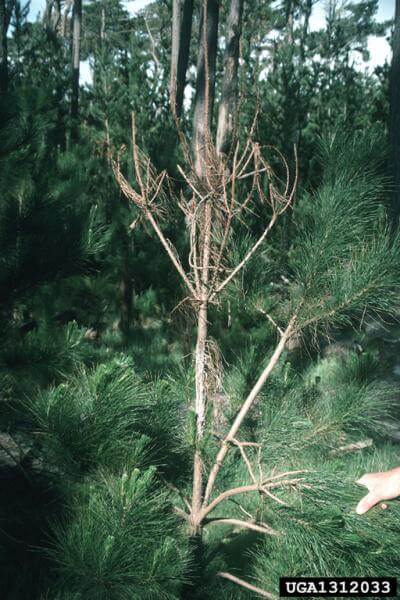
The pathogenic fungus pine pitch canker is native to the southeastern United States, Mexico, and Haiti (USDA Forest Service, 1998). Introduced into California, it is killing the narrowly endemic Monterey (=Radiata) and Torrey pines (Pinus radiata and P. torreyana). The fungus might also cause serious damage to “[a]ll economically important native pine species” in California (USDA Forest Service, 1998).
USFS scientists and managers developed a conservation priority-setting framework for forest tree species at risk from pest & pathogens and other threats. The Project CAPTURE (Conservation Assessment and Prioritization of Forest Trees Under Risk of Extirpation) uses FIA data and expert opinion to group tree species under threat by non-native pests into vulnerability classes and specify appropriate management and conservation strategies. The scientists prioritized 419 tree species native to the North American continent. The analysis identified 15 taxonomic groups requiring the most immediate conservation intervention because of the tree species’ exposure to an extrinsic threat, their sensitivity to the threat, and their ability to adapt to it. Each of these 15 most vulnerable species, and several additional species, should be the focus of both a comprehensive gene conservation program and a genetic resistance screening and development effort. Pine pitch canker is not known to be a threat to any of these 15 most vulnerable species.
Sources
Potter, K.M., Escanferla, M.E., Jetton, R.M., Man, G., Crane, B.S., Prioritizing the conservation needs of US tree spp: Evaluating vulnerability to forest insect and disease threats, Global Ecology and Conservation (2019), doi: https://doi.org/10.1016/
United States Department of Agriculture Forest Service. 1998. Pest Risk Assessment of the Importation of the Importation into the United States of Unprocessed Pinus and Abies Logs from Mexico. General Technical Report FPL-GTR-104. February 1998. 116 pages.



